Brisbane truck show debuts Include several electrified trucks, vans, minibuses and R1234yf
- PostedPublished 5 September 2021
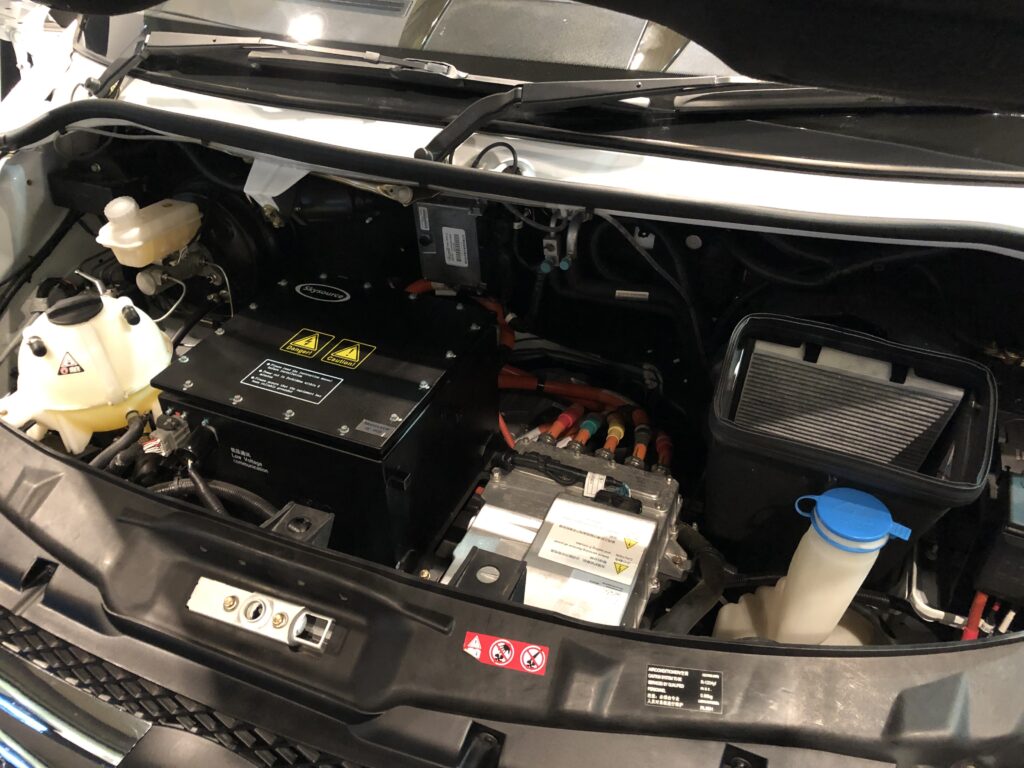
I don’t know about you, but the last place I expected to see R1234yf show up was under the bonnet of a Chinese-made electric van.
The Skywell EC11, imported by Brisbane-based EV Automotive, is a medium wheelbase mid-roof van with a design that has shades of Mercedes-Benz Sprinter, Renault Master and Ford Transit.
Unlike those vans, the EC11 is fully electric and from what I could tell by looking under the bonnet, has a fairly sophisticated driveline thermal management system.
At the heart of this is a main heat exchanger that is almost as large as a the radiator of an internal combustion vehicle, complete with Volkswagen style spherical coolant expansion tank.
The refrigerant label clearly states R1234yf, a pair of service ports reside by the firewall and there’s an easily accessible cabin filter element.
EV Electric managing director David Potter told me the EC11’s thermal management system was capable of operating in ambient conditions from 60°C to -20°C.
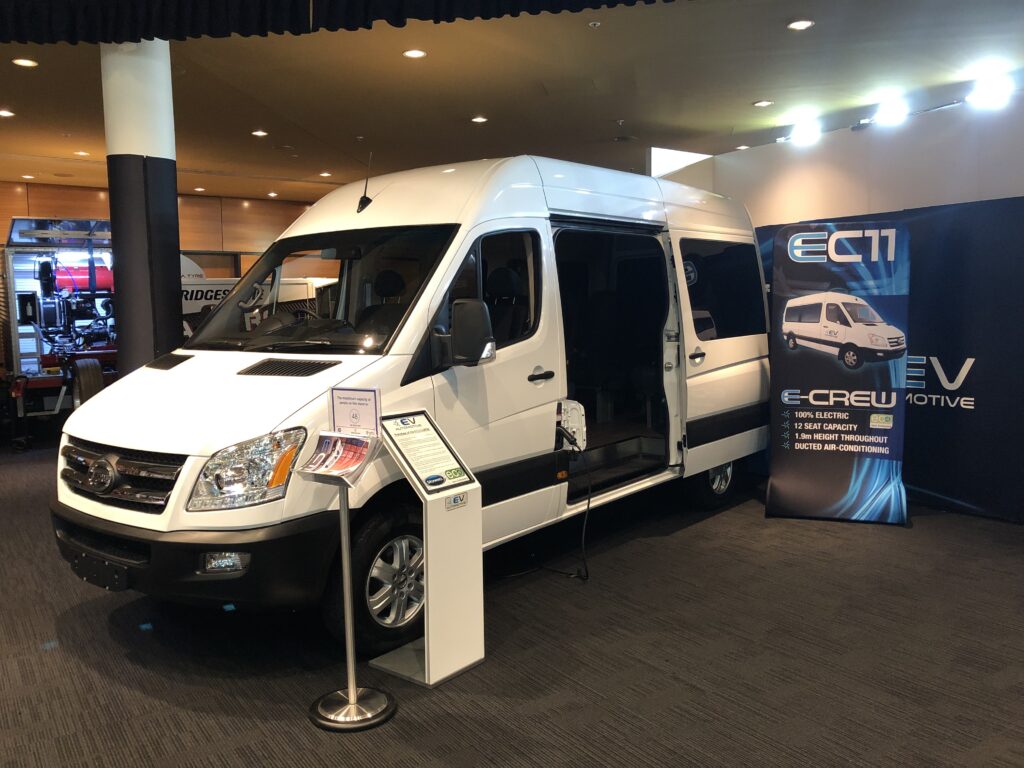
He said the van’s manufacturer was privately owned, had been building buses since 1968 and started the electrification-focused Skywell brand around a decade ago.
In his role with parent company Epoca Group, Potter had spent many years sourcing used cranes from China and importing them to Australia.
But he said finding a suitable electric van to import had been like “searching for a needle in a haystack”.
The first EC11 models for sale in Australia will arrive in August in E-Cargo van and E-Crew 12-seat bus variants, the latter featuring dual-zone air-conditioning.
Both have a 73.6kWh liquid-cooled lithium-ion battery pack operating between 250 and 365 volts and able to be replenished in two hours using a 60kW fast charger.
Potter claimed that tests in and around Brisbane simulating a typical working day of a parcel delivery courier yielded a battery range of around 270km, aided by the urban driving conditions making the most of regenerative braking.
He said when operating at the maximum 1.7-tonne payload the E-Cargo would travel up to 200km on a full battery or 300km unladen. Peak power and torque outputs are 100kW and 750Nm.
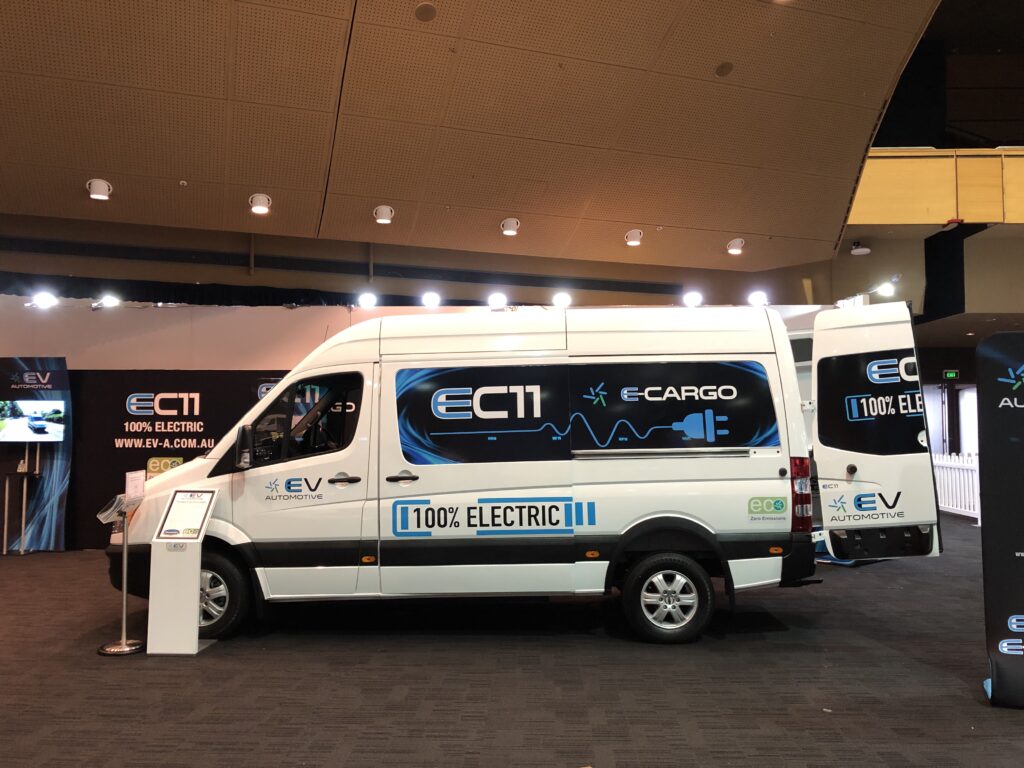
EV Automotive, which has the import and distribution rights for Oceania, will sell the vans directly and Mr Potter said the company was setting up a third-party national service network to maintain the vans – each interval costing around $190.
JAC is back
The JAC Motors stand initially evoked memories of reporting on false starts made by Chinese vehicle brands in Australia, most of which were linked to a man called Jason Pecotic.
In 2011 JAC made its first attempt at the Australian market via Sydney importer WMC Group, which also brought in Higer buses and LDV vans from China, among other short-lived or failed attempts to bring in the Foton and Joylong brands.
At the helm was Pecotic, who left WMC in 2013 and resurfaced to lead MG’s failed first attempt at re-entering the Australian market in 2015, around the time WMC entered administration.
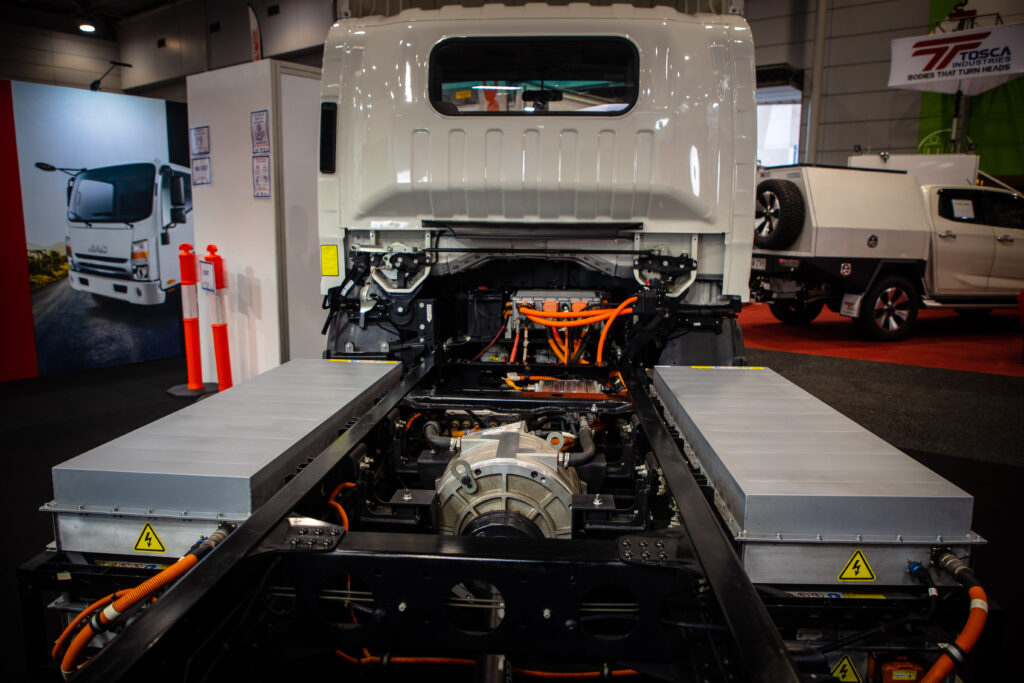
Pecotic was back in 2019 with bold plans to import Chinese hydrogen fuel-cell cars and establish infrastructure to support a fleet of hydrogen-powered taxis and vans.
So it was a bit of a jolt to see Pecotic himself readying for the JAC press conference, where I learned that JAC is now represented by Queensland-based bus importer BLK Auto.
On the Brisbane show stand was the JAC N55 electric truck, with a 99.7kWh battery pack claimed to be capable of reaching an 80 per cent charge from empty in 90 minutes, with the final 20 per cent taking another 30 minutes.
Pecotic addressed the assembled media with the self-aware announcement that “JAC arrives in Australia at this year’s Brisbane Truck Show, with an eye to the future and not the past”.
He claimed the N55 had a 200km battery range that would slash operator fuel costs by half and that maintenance would cost less than a third of that required for diesel equivalents.
The N55 has a 2.5-tonne payload and JAC has electric trucks of up to 12 tonnes across multiple wheelbases on sale overseas.
BLK Auto chair Peter Aldridge showed me around the cab-chassis on display with all the battery packs clearly plumbed for a reasonably sophisticated thermal management setup.
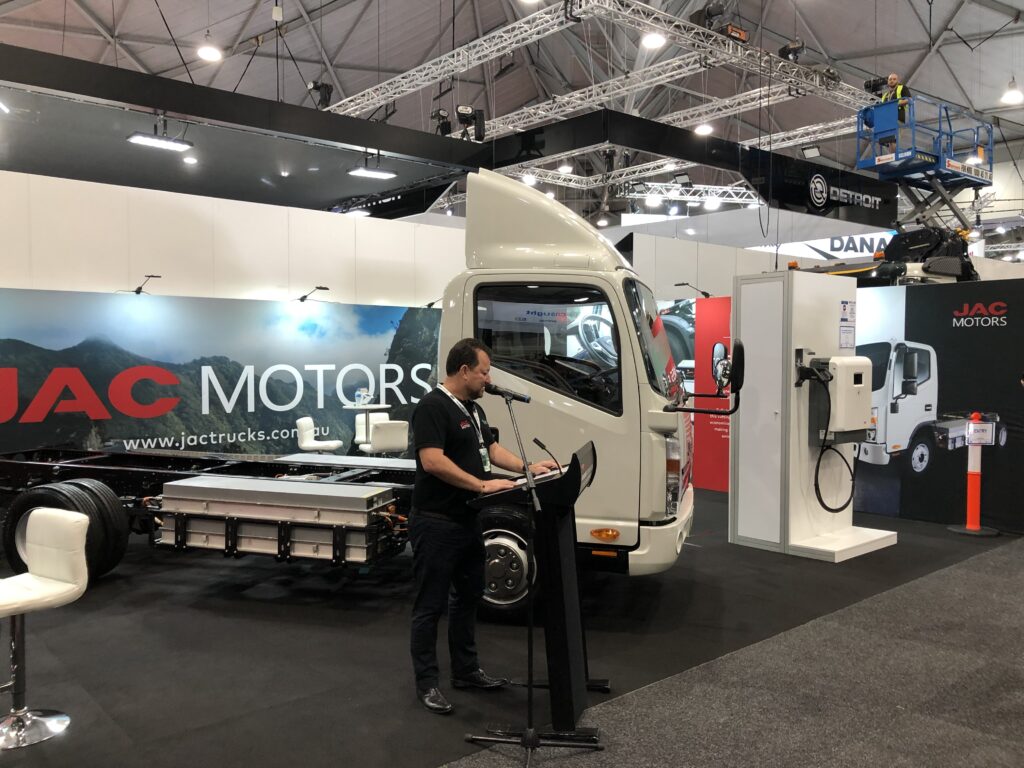
Aldridge said the cooling system also ran through the motor.
When asked about training requirements for the 400-volt system, Aldridge joked that he hadn’t yet looked at a wiring diagram for the N55 although his trade background as an electrician would help.
SEA Electric hots up
Melbourne-based SEA Electric had a substantial Brisbane Truck Show presence, officially launching its Australian-made range of electric trucks and showcasing a few applications including an elevated work platform for power line maintenance and a garbage truck.
Assembled from knocked-down Hino kits into which the SEA-Drive electric drivetrain is installed, the trucks all now bear SEA branding instead of the donor vehicles name that has in the past included Isuzu, Iveco, Ford, Mercedes-Benz and Dennis Eagle.
SEA Electric’s national parts and technical services manager Mewan Jayatilake said the SEA-Drive system “doesn’t need any form of liquid cooling for the batteries”.
“We do have a battery management system that monitors the pack voltage and temperatures,” he said, claiming the system was intelligent enough to de-rate energy outputs if “things are getting out of hand”.
“The only part that needs sort of thermal management is the motor and the motor control unit. So they need to have constant G-48 style coolant running through, and the inverter does,” he added.
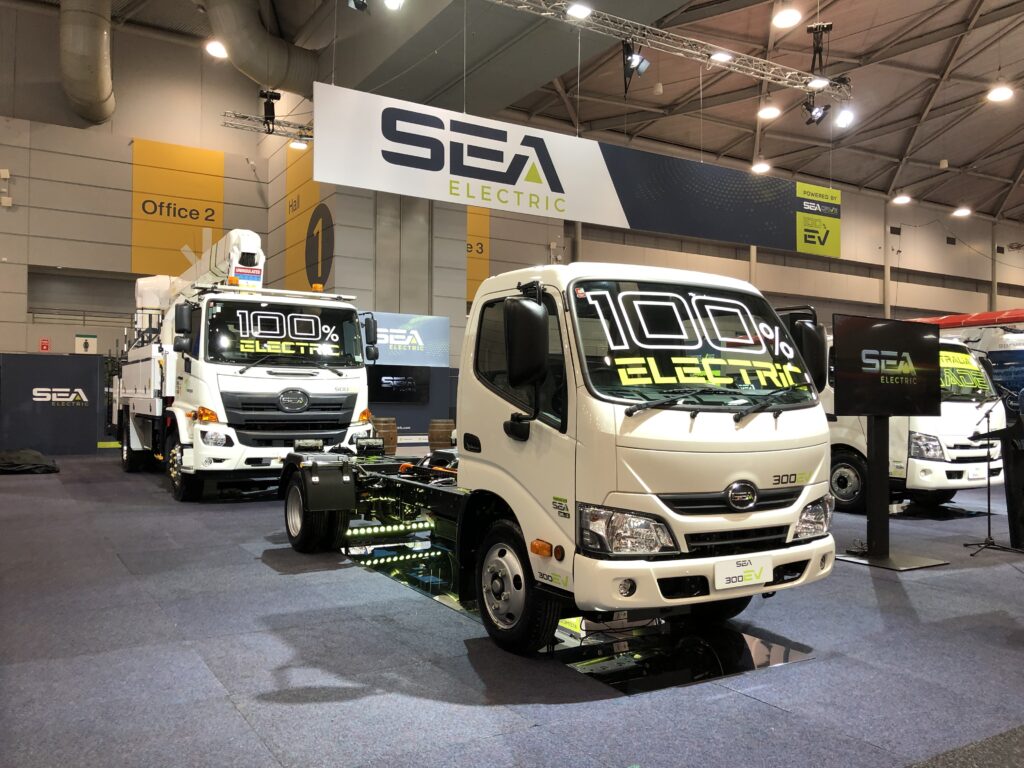
“Because these don’t run terribly hot, we have a special PTC (Positive Temperature Coefficient) based heater that runs coolant through a heating element and that’s what heats up the liquid for the cabin.”
Asked if heat pumps were under consideration, Jayatilake said: “We may look at it later on at some point, but for the moment, the design works, it’s tried and tested.”
In terms of efficiency, he said SEA Electric had found the air-conditioning to use more energy than the PTC heater although still only accounted for around four per cent of overall energy usage.
Jayatilake showed me the high-voltage air-conditioning compressor and said nominal system voltage was 440V.
In terms of repair and maintenance, Jayatilake said SEA Electric preferred to source people with an electrical background due to the current lack of automotive training and qualifications.
“Mechanics can service the standard mechanical side, the drive to the differential,” he added.

- CategoriesIn SightGlass
- Tagselectric vehicles, R1234yf, SightGlass News Issue 24, trucks

